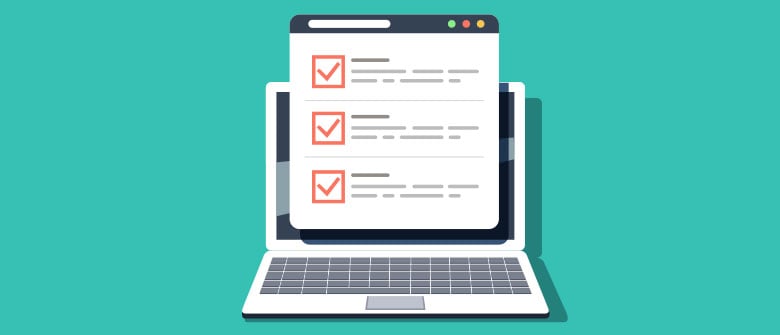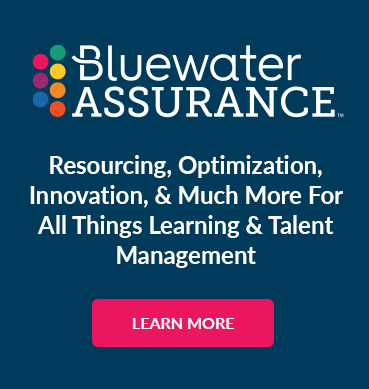Is Your LMS Configured to Support Your Learning Needs?
by Macaire Ament | July 25, 2018 04:14 PM | The Future of Learning

The right Learning Management System (LMS)- when utilized as a part of the right strategy- can transform employee learning, improve performance, and foster employee engagement. However, technology alone is just a tool. There are several key steps you must take for your LMS to reach this full potential. The first, and most important, is to define the learning needs of your organization. To define the learning needs of your organization, you will first need to define your business drivers and your business needs.
So, what is a need?
In “Needs Assessment for Organizational Success,” Kaufman and Guerra-Lopez state that, “need is a noun: a gap between current results and desired results. It is not a verb.” (p 6, 2013). When we use the word “need” as a verb (I need a course on X, or I need more people in X department) we are often prescribing the means for change without really considering all the valid ways we can close our gaps. Keeping this in mind, what benchmarks or goals indicate success for your organization as a whole? What is the gap, or need, between that success state and your current state?
As an example, let’s say you work for a company that repairs airplanes, and your on-time project close rate is below goal by 15%. That 15% is the business need or gap. To close the gap, you start by investigating potential causes. You speak with the leadership for the service team and discover that most of your incoming projects are for an airplane model that only a few employees are certified to work on.
Now that you know the organizational need and the cause behind the need, you can determine how your learning program might help resolve that need.
Why aren’t more employees completing this certification?
Let’s assume that completing this certification is voluntary, not mandatory, but learners who complete the training are eligible for additional pay when completing these types of projects. In this scenario, the cause could be one of several things. Maybe it’s about User Experience – your learners don’t start the certification because they can’t find the course in your system. Maybe it’s an awareness/marketing issue – perhaps people don’t know that they’re eligible for this training. Or, maybe people aren’t finishing the training because your current LMS configuration can’t be accessed at the job site, only in classrooms.
Having quantified this need, and identified plausible causes, NOW you can translate this need into specific, measurable benchmarks and functionality for your LMS. What capabilities are required for you to measure and impact the goals you need to impact?
The above is just one example of how to align your learning/LMS with one business need, but this process is something you’ll want to apply to each business driver to achieve maximum results. To successfully align your LMS you need to do two things.
- Define the metrics that you need to measure
- Measure your metrics and revise your plans and actions necessary
Once you do this you will have the answers you need to make data-driven changes that move you toward your goal.
At Bluewater, we believe that the full value of your LMS lies in using it to drive measurable business impact, so your benchmarks for success should tie to your business drivers. Based on our experience helping hundreds of organizations over the last 15 years, Bluewater developed our proprietary Center of Excellence Methodology (COE) to drive our clients to measurable success.
Our COE methodology defines 7 critical areas that companies must address in order to achieve maximum business impact with their LMS; User Experience, Content, Administration, Technology, Process, Data, and Reporting. Aligning the client’s LMS to fill the gap in our example scenario would likely include many of these areas such as User Experience, Content, Technology, Process, and Reporting. The key is that everything must work together to achieve maximum impact.
Evaluating your current LMS Configuration (or planning your new LMS configuration) can be an overwhelming task, but it’s important for your system to support the success of your business.
Ready to learn more about how Bluewater can help you make the most of your learning, talent, or human capital management system?
Feel free to reach out to us directly!
Search Our Blogs
Categories
- Ad Hoc (1)
- ADMIN (1)
- administration (1)
- AI (2)
- analytics (2)
- anxiety (1)
- Artificial intelligence (2)
- automation (1)
- BI (1)
- blog (1)
- Blueprint (1)
- center of excellence (10)
- Communication (2)
- COVID-19 (2)
- Culture (1)
- Custom Content (1)
- customer service (1)
- Data (1)
- Employee Engagement (1)
- Shark Bites - Cornerstone Edition (12)
- Shark Bites - SumTotal Edition (4)
- Shark Bites - Ultimate Edition (5)
- The Future of Learning (16)
- The Future of Talent Management (30)
- User Experience (2)
- UX (2)
- wellbeing (1)
Recent Posts
- Selecting Learning & Talent Technology - Part 5: Evaluating Vendors and Solutions
- Selecting Learning & Talent Technology - Part 4: Defining Technology Requirements
- Selecting Learning & Talent Technology - Part 3: Assessing and Aligning Talent Needs
- Selecting Learning & Talent Technology - Part 2: Understanding Business Drivers
- Selecting Learning & Talent Technology: A Strategic Approach to Success


